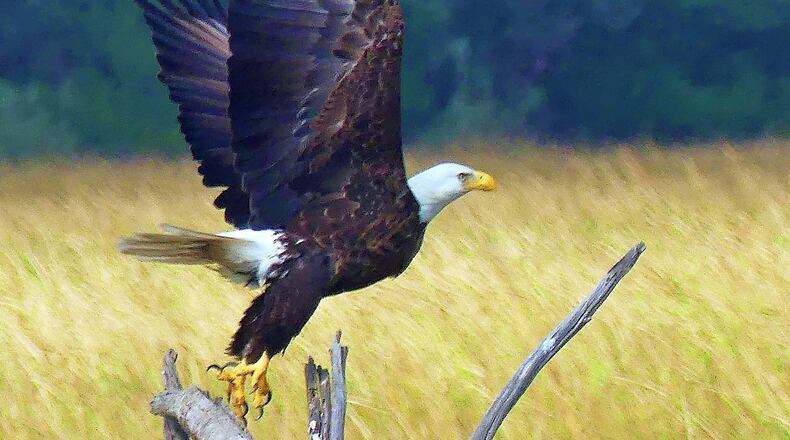It has been a good year for Georgia creatures once facing extinction — the bald eagle, loggerhead sea turtle and red-cockaded woodpecker. According to the state Department of Natural Resources (DNR), the three species set new nesting records or had a “standout season” this year. Here’s a brief look:
• Georgia’s first statewide survey of bald eagle nests in five years showed that the iconic, once-endangered birds nested in the state in record numbers. Surveys during winter and spring counted 229 nesting territories that produced 227 babies — topping the previous best of 218 set in 2017. Sixty years ago, the bald eagle had all but disappeared from Georgia. This year’s good news, however, is tempered by reports of sick and dead eagles on the coast from the highly pathogenic avian influenza.
• Sea turtles, nearly all loggerheads, posted a new record of 4,000-plus nests on Georgia’s beaches this year, breaking the old record of 3,950 set in 2019. In 2004, only 358 sea turtle nests were tallied on the coast. The new record is very promising, the DNR says, but sea turtles still have a long way to go before full recovery.
• The red-cockaded woodpecker, which has been on the Endangered Species List since its inception in 1973, had a “standout nesting season” on DNR-managed lands. Wildlife biologists monitored 63 breeding groups of the rare birds and banded 83 nestlings, including a record 54 young at Silver Lake Wildlife Management Area near Bainbridge.
Georgia’s most critically endangered species, the Northern right whale, whose calving grounds include the state’s ocean waters, also had a decent year with 15 calves born. The whale, though, must have many more good seasons to overcome the looming threat of extinction.
Other once-endangered species have returned to abundance in Georgia, including the American alligator and the brown pelican. The Okefenokee Swamp alone has an estimated 12,000 gators. White-tailed deer, wild turkeys and American beavers, also once scarce in Georgia, have made spectacular comebacks.
IN THE SKY: From David Dundee, Tellus Science Museum astronomer: The moon will be full Saturday (Sept. 10) — the famed “Harvest Moon.” Rising in the east are Venus, just before dawn; Mars, around midnight: Saturn (high), just after dark; and Jupiter, at sunset. Jupiter will appear near the moon Sunday night.
Charles Seabrook can be reached at charles.seabrook@yahoo.com.
About the Author
Keep Reading
The Latest
Featured



